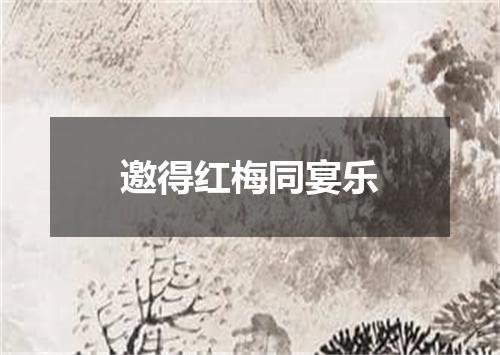“邀得红梅同宴乐”出自宋代宝月的《鹊踏枝》,诗句共7个字,诗句拼音为:yāo dé hóng méi tóng yàn lè,诗句平仄:平平平平平仄仄。
“邀得红梅同宴乐”全诗:
斜日平山寒已薄。
雪过松梢,犹有残英落。
晚色际天天似幕。
一尊先与东风约。
邀得红梅同宴乐。
酒面融春,春满纤纤萼。
客意为伊浑忘却。
归船且傍花阴泊。
《鹊踏枝》是宋代诗人宝月的一首诗,诗中描绘了冬日的景色,以及诗人在此景中的感受和情绪。
中文译文:
斜日平山寒已薄,
The slanting sun has already thawed the cold on the flat mountainside,
雪过松梢,犹有残英落。
Snow has passed by the pine branches, yet some petals still fall.
晚色际天天似幕,
As evening comes, the sky looks like a curtain,
一尊先与东风约。
A cup of wine first invites the east wind to join.
邀得红梅同宴乐,
Inviting the red plum blossoms to join in the feast,
酒面融春,春满纤纤萼。
The wine is blended with the spring, and the spring fills the delicate petals.
客意为伊浑忘却,
Forgetting the guest's intentions,
归船且傍花阴泊。
The boat will anchor near the shade of the flowers.
诗意:
这首诗描绘了一个寒冷的冬日傍晚,夕阳斜照在山上,雪已经融化了,只有残留的花瓣还落下来。晚色降临,天空像一道幕布。诗人举起酒杯,邀请东风和红梅一起欢庆,酒与春天融合在一起,使得花瓣更为娇嫩。在这美好的景色中,诗人忘记了客人的来意,只想在花影中停泊,留下心中的感受。
赏析:
这首诗以冬日傍晚为背景,描绘了一个美好而又温暖的场景。诗人将东风和红梅邀请到自己身边,酒与春天融为一体,使得花瓣更加娇嫩,从而营造出一种美好的氛围。诗人不仅描绘了自然景色,还表现了自己的感受和情感,使得整首诗更富有感染力。同时,诗人通过借景抒情的手法,将自己的情感与自然景色融为一体,表达了对生命的热爱和对美好事物的向往。
què tà zhī
鹊踏枝
xié rì píng shān hán yǐ báo.
斜日平山寒已薄。
xuě guò sōng shāo, yóu yǒu cán yīng luò.
雪过松梢,犹有残英落。
wǎn sè jì tiān tiān shì mù.
晚色际天天似幕。
yī zūn xiān yǔ dōng fēng yuē.
一尊先与东风约。
yāo dé hóng méi tóng yàn lè.
邀得红梅同宴乐。
jiǔ miàn róng chūn, chūn mǎn xiān xiān è.
酒面融春,春满纤纤萼。
kè yì wèi yī hún wàng què.
客意为伊浑忘却。
guī chuán qiě bàng huā yīn pō.
归船且傍花阴泊。
拼音:yāo dé hóng méi tóng yàn lè
平仄:平平平平平仄仄
韵脚:(仄韵) 入声三觉 (仄韵) 入声十药